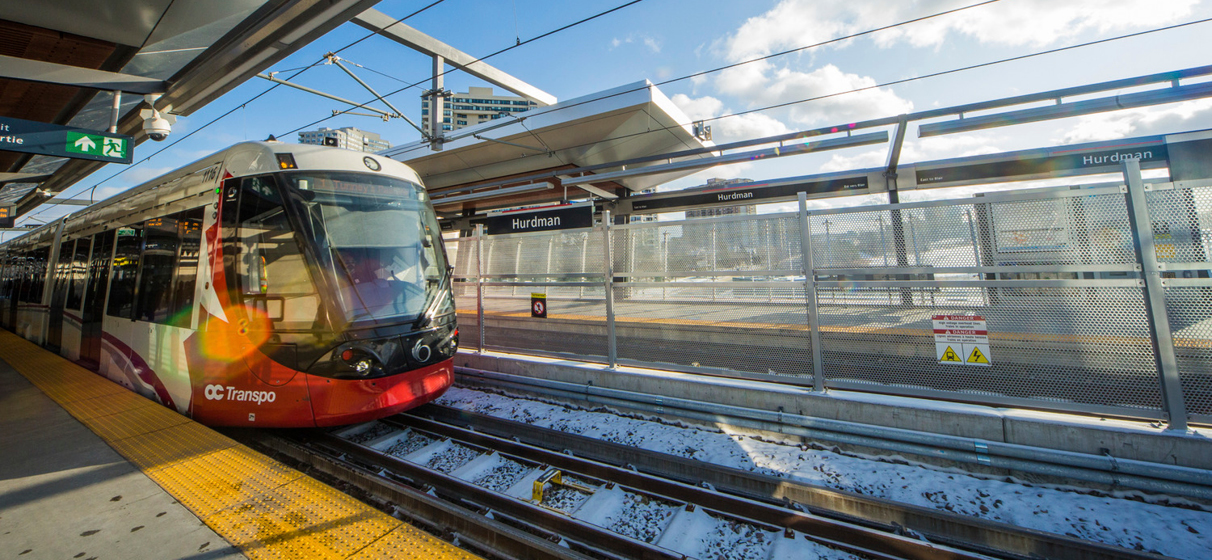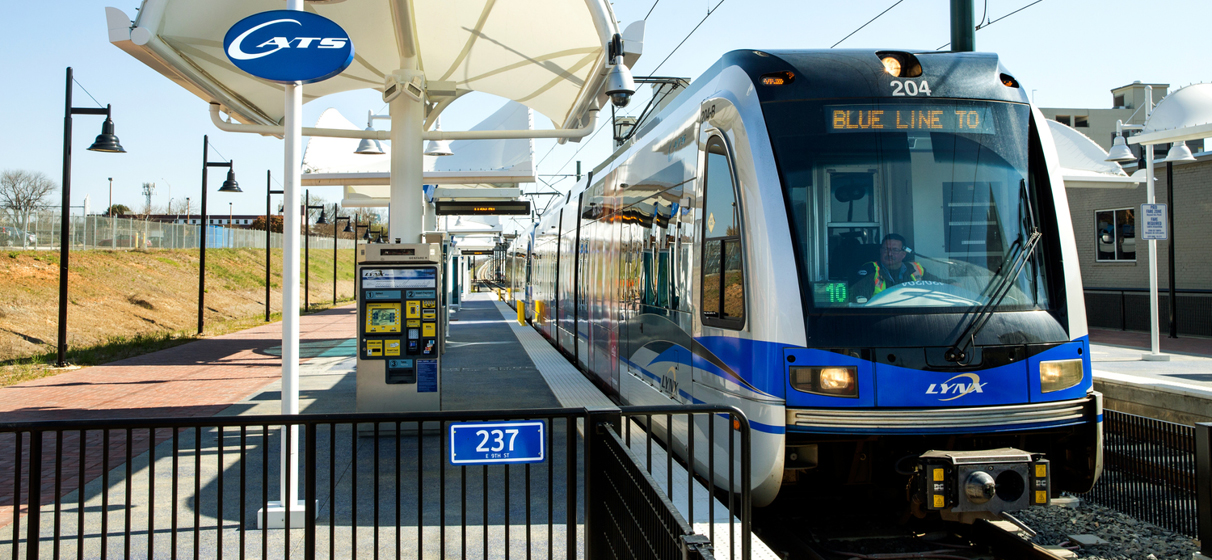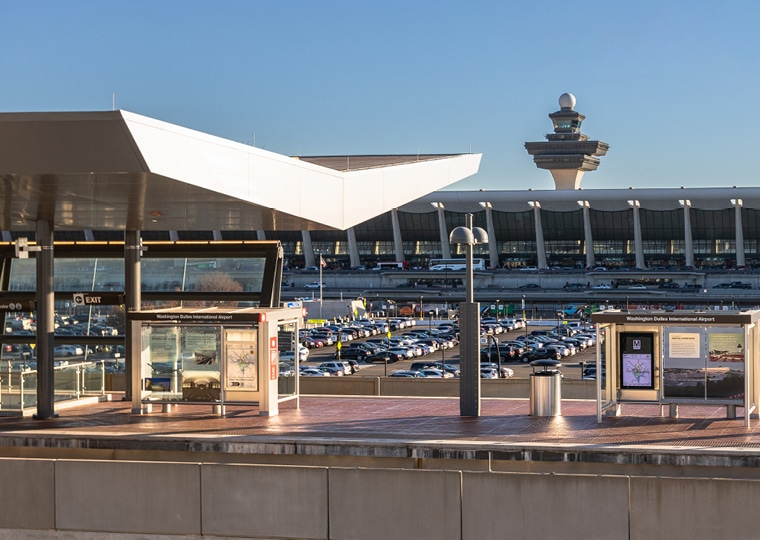As cities across North America invest in ambitious light rail projects to meet rapidly growing demand for sustainable transportation, two recent initiatives that were supported by STV’s multidisciplinary team, stand out for their impressive scale, innovative engineering solutions, long-term community impacts and enduring client-consultant partnerships that made them possible.
The Charlotte Area Transit System’s (CATS) Lynx 9.3-mile Blue Line Extension and the City of Ottawa’s 12.5-kilometer Confederation Line represent the culmination of decades of planning, design and construction to enhance mobility through multi-billion-dollar investments in new electric rail corridors. These transformative light rail transit systems also highlight how a long-standing relationship between the municipality and a professional services firm like STV, can provide significant value to multi-phase transit programs.
“This longevity promotes confidence, efficiency and consistency as these light rail mega-projects advance in phases over multiple decades,” said John Ponzio. “Maintaining such key client-consultant relationships is crucial for major public works of this magnitude.”
Despite being separated by over 800 miles, the two projects share notable similarities – from upgrading existing infrastructure in dense urban areas to seamlessly integrating various rail modes and catalyzing economic development along their routes. While Ottawa’s system involved tunneling beneath the downtown district, both initiatives demonstrate how cities can transform their transportation systems to meet future needs. They also exemplify how consistent collaboration between municipalities and trusted partners can overcome the inherent challenges of delivering major transportation solutions that will shape how people move for future generations.
Continuity, Alignment and Forward Momentum
The decade-long Ottawa Light Rail Expansion project faced a significant challenge: maintaining staffing continuity. To address this, the client and joint venture retained key staff members throughout the project’s lifecycle.
Work on this program first began more than 14 years ago with Stage 1 of the Confederation Line opening in 2019. Because of continued investments by the city and its federal and provincial funding partners, Stage 2 is currently under construction and approaching the onset of its phased opening and the future Stage 3 project has gone through the Environmental Assessment process.
This core group involved with this program developed a deep understanding of the project’s goals and history. Daily collaboration spanning 14 years and counting fostered trust, respect and camaraderie between the client and consultant.
“I started this project when my son was a young child, and I’ll likely still be working on it when we’re teaching him to drive,” said Rich Piloseno, RA, STV principal and senior project manager. “It’s amazing to be part of something that’s growing along with my family, shaping our community for generations to come.”
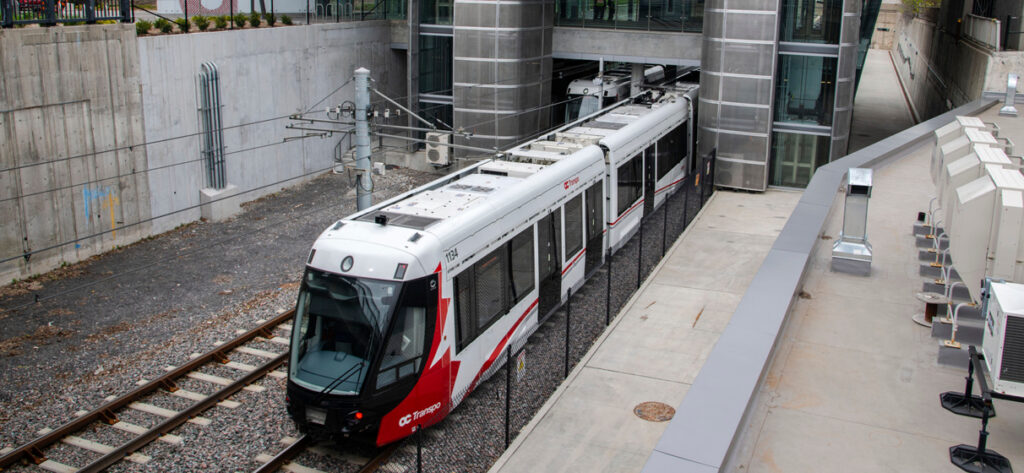
To maximize value and efficiency, the Ottawa project implemented several innovative design features. These included customized station platform dimensions based on specific needs. Above-ground platforms were designed based on vehicle length, operational plans, ridership forecasts and the National Fire Protection Association’s 130 standards, with provisions for future extensions. Underground stations were built to maximum platform width within the available subsurface right-of-way and a length of 120 m to exceed the ultimate ridership capacity. Where possible, bus transfers were integrated within the fare-paid area, streamlining passenger transitions between modes. Weather protection at each station was customized based on local microclimates, anticipated ridership and station orientation. Windscreens were strategically placed considering station layout and local topography. To ensure consistent accessibility, all entrances and platforms in Ottawa were equipped with redundant elevators, exceeding standard regulations and mitigating issues caused by elevator outages.
For the CATS project, the team had close coordination between track and train control groups to maximize train speeds and minimize trip times.Eric Root, vice president and senior engineering operations manager, and Amos Liu, vice president and engineering chief, emphasized how team members, mostly local to North Carolina, embraced the opportunity to impact their community.
“System efficiency is crucial in rail operations,” Root said.
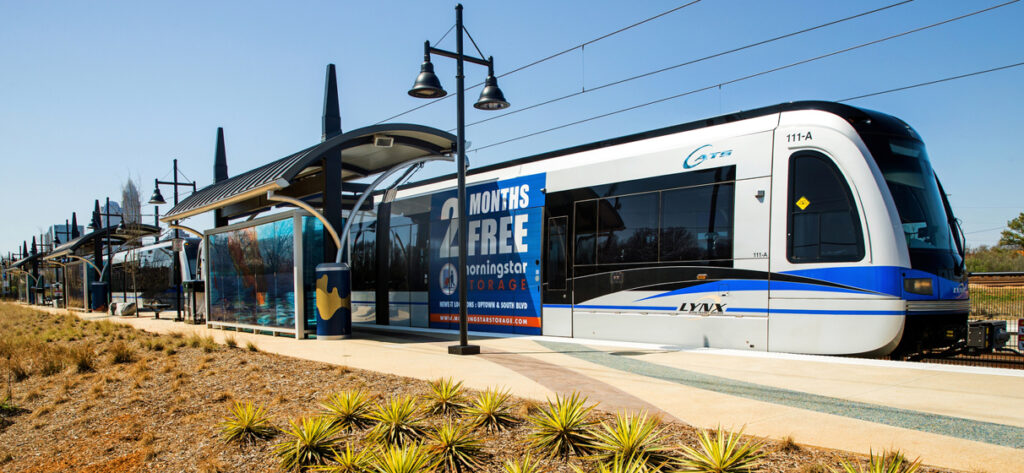
Effective Collaboration
STV-led consultant teams collaborated closely with the City of Ottawa’s Rail Construction Program (RCP) staff. Utility coordination was managed by RCP staff with city employment backgrounds, facilitating smooth interactions with municipal water and drainage departments. For external utilities like gas and electric, RCP leveraged pre-existing contacts to enhance coordination.
The Trillium Line in Stage 2 construction involved complex railroad interactions. The Trillium Line partially utilized a former Canadian Freight Line (CN) track, with designs accommodating potential overnight CN operations. Construction over an active passenger and freight line required early engagement with CN for clearance approvals and flagging arrangements.
Highway department coordination spanned both city and provincial jurisdictions. On the Trillium Line, the city bridge staff collaborated with the STV team and RCP to rehabilitate bridges while minimizing construction disruptions. For Confederation Line East, LRT construction between Highway 174 lanes required close coordination to shift the eastbound highway. Confederation Line West necessitated extensive coordination with the Ministry of Transportation Ontario (MTO) for construction along Highway 417, requiring dedicated STV-led consultants for MTO liaison.
“The success of the Ottawa project hinged on our ability to foster seamless collaboration across diverse stakeholders,” said Alfred Klag, PE, principal and senior project manager at STV. “By embedding our team with City staff and cultivating strong relationships with utilities, railroads and highway departments, we transformed potential obstacles into opportunities for innovation. This collaborative approach not only streamlined our processes but also ensured that the project truly served the community’s needs.”
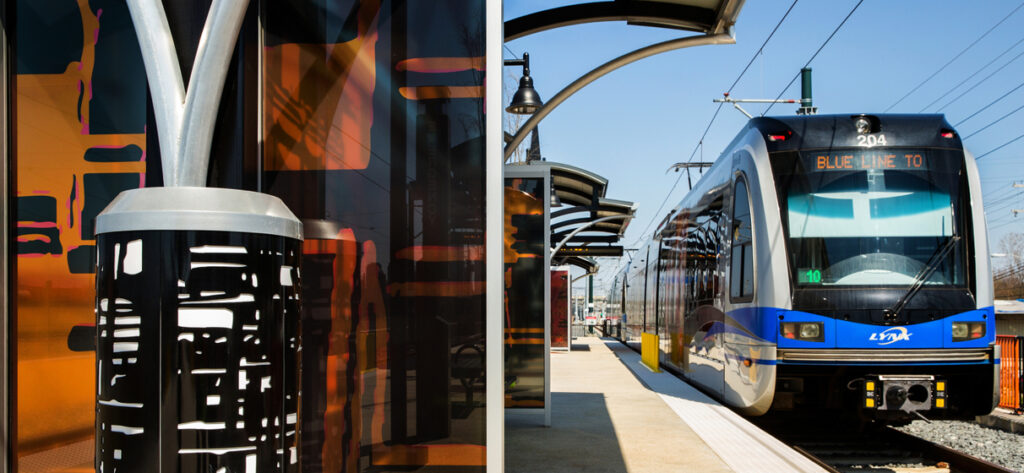
For the CATS project, the team implemented the project management framework that is centered on the three Cs: collaborate, communicate, and coordinate. The team regularly engaged key stakeholders to share project information and understand how to integrate various projects for community benefit.
With six freight railroads impacted by the project (Norfolk Southern, CSX, AC&W, North Carolina Railroad, NCDOT Rail and Amtrak), the team assigned experienced railroad liaisons to facilitate coordination and guide the client through negotiations. Tri-weekly meetings were held with Duke Energy, Piedmont Natural Gas and AT&T and frequent communications ensured smooth progress. To streamline utility relocations, the team designed a joint duct bank for communication companies.
Minimizing Disruption
Underground tunneling was a significant aspect of the Ottawa project. Confederation Line Stage 1 featured downtown Ottawa rock tunneling. The team used road header excavation beneath city streets to minimize disruption. Downtown impact was limited to constructing station access points, requiring coordination with nearby building owners. While long-term lane closures occurred, disturbances were minimized.
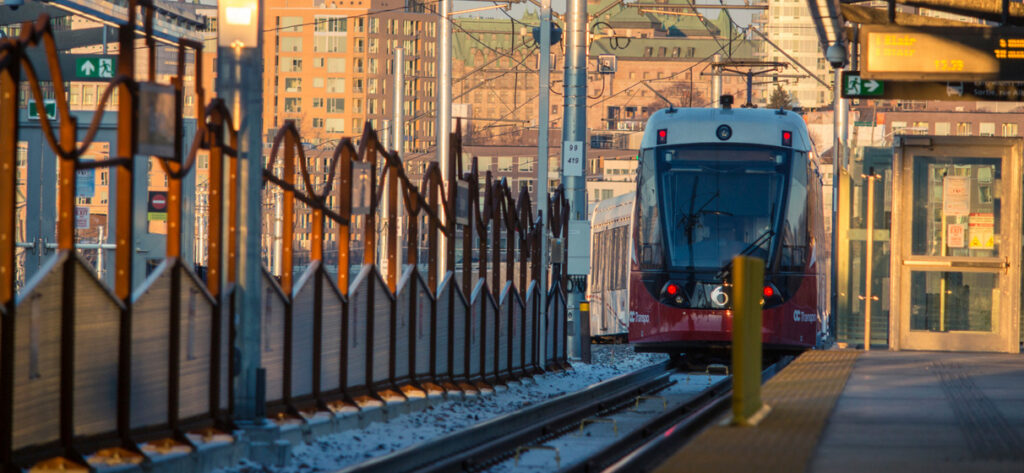
Confederation Line Stage 2 West included three short tunnels and two below-grade stations outside downtown. Due to shallow depth, cut and cover methods were employed. Construction staging minimized street disruption, with detailed traffic control plans managing work in congested areas.
“Throughout, our priority remained consistent: deliver essential infrastructure while minimizing disruption to the city’s daily life,” Klag added.
Catalyzing economic development
Station planning involved close engagement with adjacent property owners to optimize entrance locations and transit connections. Several stations integrated entrances into existing buildings or secured air rights for future development above station structures. This collaboration enhanced both the system’s functionality and the development potential of nearby properties, with some redevelopments completed before revenue service began.
The project extended beyond stations, improving overall urban connectivity. Pedestrian and cycling paths were integrated along much of the trainway, filling gaps in the city’s pathway system. Three stations connected directly to local universities via enclosed pedestrian bridges or underpasses.
“We designed our stations to be more than just transit hubs,” Piloseno said. “By incorporating spacious areas for community events like farmers’ markets and small performances, we’ve created vibrant spaces that activate neighborhoods and foster community engagement beyond their primary transit function.”
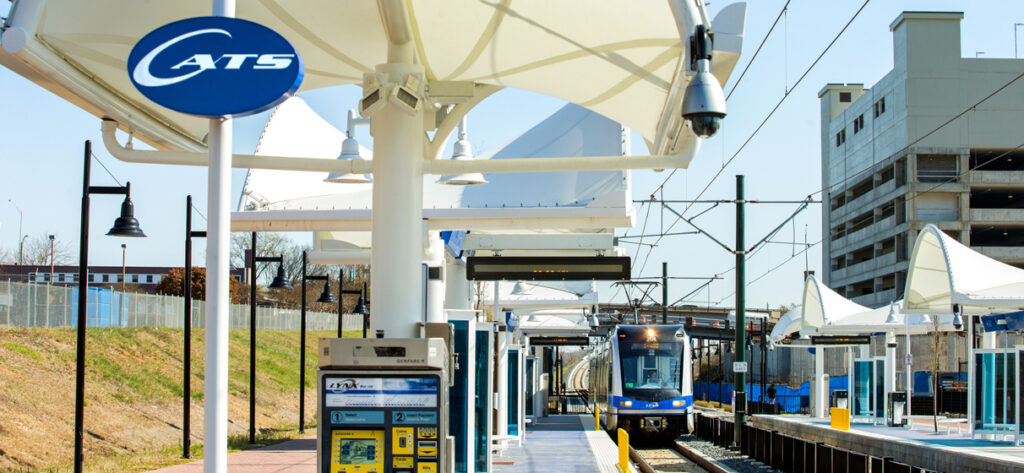
For CATS, the transit-oriented development (TOD) planning began from the project’s inception. The team focused on enhancing station walkability, strategically locating parking garages and identifying prime areas for TOD. A notable example is the 9th Street Station, where close collaboration with a developer yielded mutual benefits. CATS secured necessary right-of-way and improved access roads, while the developer gained advantageous platform access and accommodations for their plaza and parking deck.
“This partnership exemplifies our approach to integrating transit infrastructure with community development,” Root added.
